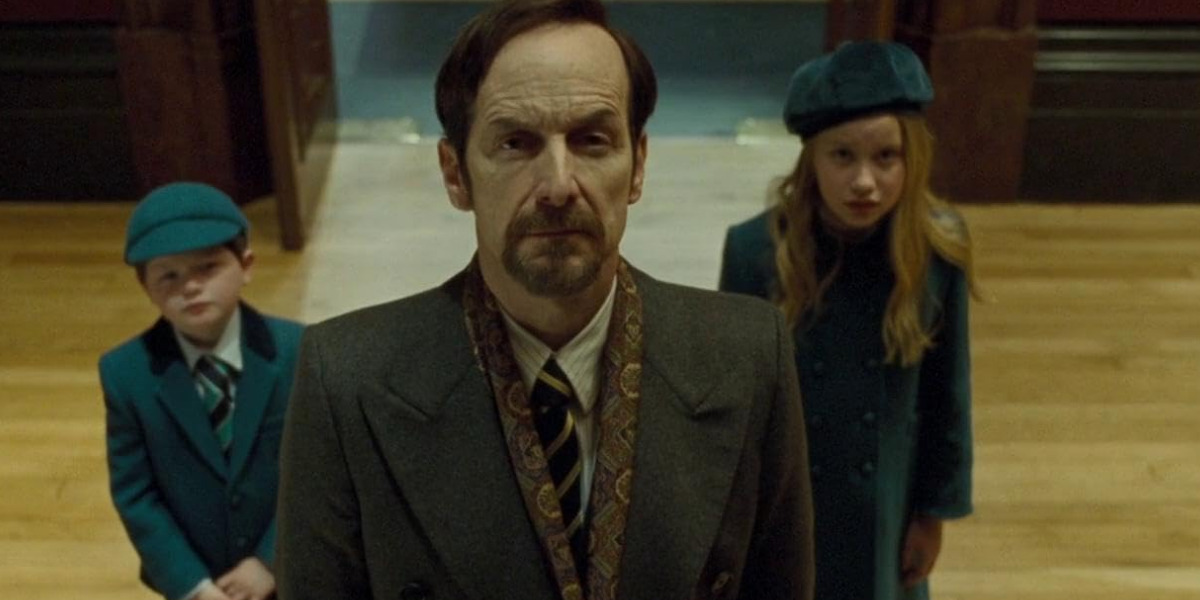Danis Tanovic’s crime film, ‘The Postcard Killings,’ presents a serial killer mystery where a string of postcards and known artworks are the only clues left behind after gruesome murders. A nameless killer with a penchant for staging their victims— young, married couples— into sordid art imitations makes their way across Europe, dropping bodies and leaving cryptic postcards behind. As a result, a joint task force forms across Europe with a new city’s detectives joining the investigation after every murder. However, among their midst is one American Detective, Jacob Kanon, who lost his daughter in one of the killings, driving him to use his monumental grief as fuel to follow the killer’s footsteps and bring them to justice.
The film offers a bewildering puzzle to the audience within its criminal narrative, compelling them to wonder about the perpetrator’s identity and motives. However, the serial killer’s unique M.O. and assigned moniker, “The Postcard Killer,” may lead viewers to wonder whether or not the film’s narrative is based on a true story.
The Postcard Killers is Based on a Book
No, ‘The Postcard Killings’ is not based on a true story. Instead, it is a film adaptation of a 2010 crime fiction novel written by renowned American author James Patterson and Liza Marklund, a Swedish journalist & writer best known for her crime novels. The book marked the authors’ first and only collaboration to date, brought on by Patterson’s inclination towards writing a thriller with the other author, whose books he had previously read and enjoyed.

Likewise, Marklund was also familiar with Patterson’s work, leading to a swift agreement between the two. As such, after pitching a basic storyline, Patterson got to work, exchanging emails and working on drafts alongside the Swedish author. Therefore, the novel was initially born out of a simple idea of collaboration without any basis in a real-life crime.
Although Hollywood picked up the book for an on-screen adaptation, it frequently changed directions until settling under Tanovic’s guidance. As such, with numerous screenwriters behind an initial screenplay and the final script inspired by the former, ‘The Postcard Killings’ finally found its footing. Thus, the film, which remains rooted in Patterson and Marklund’s book, is entirely a work of fiction crafted into its ultimate form by a number of people.
Nevertheless, despite its basis in fictionality, the story, like many crime-driven tales, manages to grasp a sense of realism. The film’s central focus, the titular killings, is defined by the macabre, artistic scenes they make. The killer drains their victims of blood and stages their bodies into a shocking rendition of famous paintings. Furthermore, prior to their arrival in the town chosen as the hunting ground, the killer sends out coded postcards to local journalists.
From the killer’s methods, their killing spree almost takes on a brutish performance art perspective, signaling the killer’s actions as a cry for attention. Over time, society has seen the appearance of serial killers who seem to crave public attention and infamy for their horrendous crimes. The infamous Zodiac Killer, active in the ’60s-70s, presents the immediate instance of such an occurrence. From contact with the press, establishing his official alias and symbol, to threatening newspapers into publishing his ciphers, The Zodiac Killer was notorious for seeking public attention.
Likewise, David Berkowitz, a.k.a. Son of Sam, and his ill-famed letter to the Police, self-announcing himself as “Beelzebub,” “Chubby Behemouth,” among other titles, proposes another example. Therefore, media and public attention remain a known aspect of a serial killer’s unbalanced motives. In that sense, the killer depicted within ‘The Postcard Killings’ retains some reflection of reality. While the same doesn’t tie the film into a real-life crime, it infuses the narrative with some realism.
Lack of Connection To John Frank Hickey, a.k.a. The Postcard Killer
Although ‘The Postcard Killings’ lack of basis in reality remains evident, the film’s title, alluding to a Postcard Killer, may lead some viewers to wonder if the film has any connection to the known serial killer, Frank J. Hickey, better known by his alias The Postcard Killer.

Hickey was a serial killer of the late 19th century. Although the exact details of his crimes are obscure and based on assumption, he likely became a public threat as a killer in 1891 after killing an eight-year-old child. By the early 20th century, only a decade after his first assumed crime, Hickey committed two more child murders, earning himself a spot in history as a serial killer.
The man earned his nickname “The Postcard Killer” after sending postcards to the police, wherein he bragged about his misdeeds in an attempt to play psychological games with his pursuers. Yet, even though the man is a fairly well-known name in serial killer history, Tanovic’s film does not in any way delve into his life and story. Similarly, authors Patterson and Marklund have also never alluded to Hickey’s involvement as an inspiration for their story. Therefore, no correlation exists between ‘The Postcard Killings’ and Hickey despite the momentary similarities they may share. Ultimately, the film remains fictional in nature.
Read More: The Postcard Killings Ending, Explained


You must be logged in to post a comment.